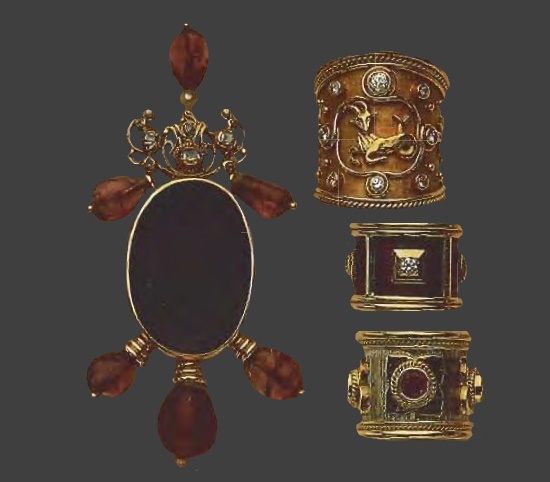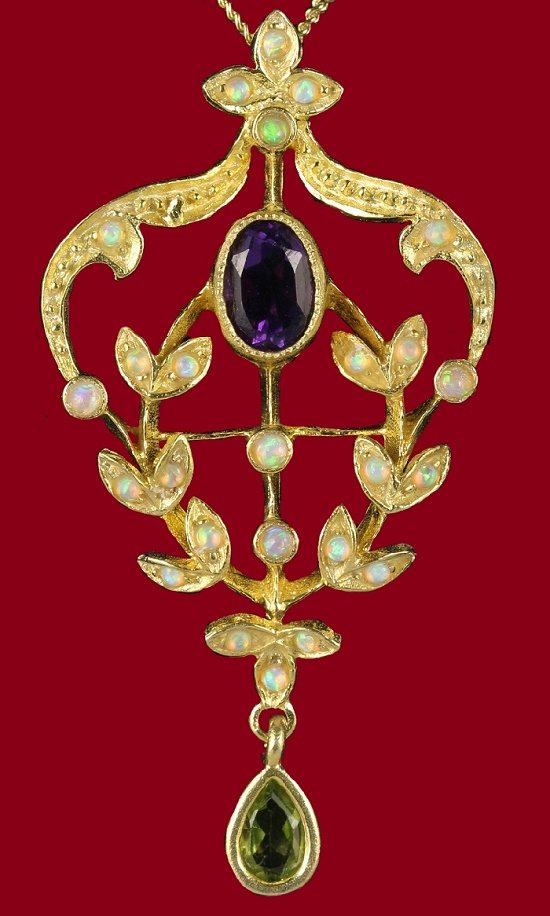British jewelry designer Elizabeth Gage
British jewelry designer Elizabeth Gage
Generally speaking, British jewelry in the 1970s and 80s followed conservative, traditional trends. Much of the jewelry trade in England was centered on antique and vintage jewelry from the early 20th century. However, London-based designer and virtuoso jeweler Elizabeth Gage achieved worldwide recognition during these decades, and for good reason.
She attracted attention with the creation of very unusual jewelry, which creatively combined the styles of Ancient Rome and the Renaissance. Her unique jewels often combine antique coins, carved gemstones or 18th century glass, intaglios with baroque pearls, diamonds and colored stones. Some of her creations are additionally embellished with translucent enamels on the metal surface. Most of Gage’s ornaments are large and dramatic. Rings are often high domed, set with cabochon-cut stones or sculpted gold, and can be up to an inch wide. Gage epitomizes the trend of “interpretive” jewelry that became popular again in the 1980s. Undoubtedly, Elizabeth Gage inspired and influenced jewelers by giving elements of the past a modern form.
One of the most influential English jewelers of the late 20th century, Elizabeth Gage began her career as a designer over half a century ago. After studying design at the Chelsea School of Art and Sir John Cass College in 1968, Elizabeth received a commission from Cartier in New York. Four years later, she received the prestigious international De Beers award. Other prizes and awards followed, including the Queen’s Award.
Elizabeth’s pieces often grace celebrities, feature in leading fashion magazines and are part of the permanent collection of jewelry at the Victoria and Albert Museum in London.

































